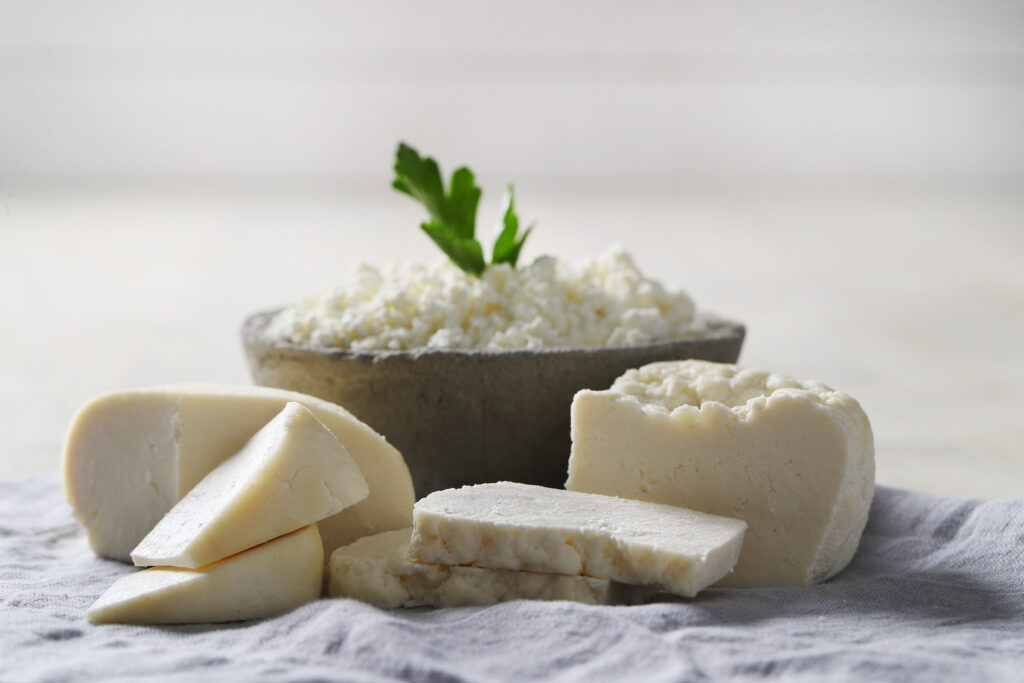Boursin cheese is a versatile spread that’s perfect for adding a touch of elegance to your appetizers or snacks. Making your own homemade Boursin cheese allows you to customize the flavors and enjoy a fresh, preservative-free spread. In this post, we’ll share a delicious homemade Boursin cheese recipe, discuss its health benefits, preservation techniques, and more.
What is Boursin Cheese?
It is a creamy and flavorful cheese spread known for its rich and indulgent taste. It is typically made from cream cheese and blended with various herbs and spices, such as garlic, dill, chives, and more.
What Is Boursin Cheese Made Of?
In a nutshell, it is made from cream cheese, butter, garlic, herbs (like basil, thyme, and dill), and optional spices for flavor.
Boursin Cheese Recipes:
- 8 oz (227g) cream cheese, softened
- 4 oz (113g) unsalted butter, softened
- 2 cloves garlic, minced
- 1 teaspoon dried basil
- 1 teaspoon dried thyme
- 1 teaspoon dried dill
- 1 teaspoon dried chives
- 1/2 teaspoon black pepper
- 1/4 teaspoon salt
- 1/4 teaspoon paprika (optional)
- 1/4 teaspoon red pepper flakes (optional)
How To Make Boursin Cheese
- In a mixing bowl, combine the softened cream cheese and butter until smooth and well blended.
- Add the minced garlic, dried herbs (basil, thyme, dill, and chives), black pepper, salt, and paprika (if using). Mix until all the ingredients are evenly incorporated.
- Taste the mixture and adjust the seasoning to your preference. If you like it spicier, add red pepper flakes.
- Once you’re satisfied with the flavor, transfer the mixture to an airtight container.
- Refrigerate for at least 2 hours to allow the flavors to meld together. For even better results, let it chill overnight.
- Serve your homemade cheese with crackers, bread, vegetables, or use it as a spread for sandwiches and bagels.

Health Benefits
- Rich in Calcium: like other dairy products, is a good source of calcium, essential for strong bones and teeth.
- Protein: Cream cheese used in Boursin is a moderate source of protein, aiding in tissue repair and muscle maintenance.
- Probiotics: Some versions of this cheese contain live probiotic cultures that can promote a healthy gut microbiome.
- Antioxidants: Herbs like basil and thyme used in Boursin cheese are rich in antioxidants, potentially offering health benefits like reducing inflammation.
How Long Do You Preserve Boursin Cheese
To preserve your homemade Boursin cheese, follow these tips:
- Refrigeration: Always store Boursin cheese in an airtight container in the refrigerator. It can last up to two weeks if properly sealed.
- Freezing: If you want to extend the shelf life, you can freeze Boursin cheese. Portion it into smaller amounts and wrap tightly in plastic wrap before placing it in an airtight freezer bag. Frozen Boursin cheese can last up to three months.
- Avoid Cross-Contamination: Use clean utensils when serving to prevent contamination and spoilage.
Does Boursin Cheese Smell?
Boursin cheese typically has a mild to moderate aroma that is influenced by the herbs and spices used in its preparation. While it is not known for having an overwhelmingly strong or offensive odor, it does have a noticeable fragrance due to ingredients like garlic, herbs, and sometimes, additional flavorings like shallots.
Its is often described as herbaceous, creamy, and slightly garlicky. It’s generally appealing to those who enjoy the combination of herbs and cheese. However, the aroma can vary depending on the specific flavor of Boursin cheese you choose, as there are different varieties available with varying ingredients and levels of seasoning.
If you or others around you are sensitive to certain odors, it’s a good idea to be aware of the aroma when serving Boursin cheese, especially in social settings or if you’re planning to pair it with other foods. In most cases, the scent is part of the overall sensory experience of enjoying this popular cheese spread.
Is Boursin Cheese Safe During Pregnancy?
Yes, its generally considered safe to eat during pregnancy if it is made from pasteurized milk. Pasteurization is a process that involves heating milk to kill harmful bacteria, including Listeria, which can be dangerous for both the mother and the baby during pregnancy. Most commercially produced cheeses in the United States and many other countries are made from pasteurized milk, so it’s essential to check the label to ensure that the Boursin cheese you’re consuming is pasteurized.
Conclusion
One of the joys of making homemade Boursin cheese is the ability to customize it to your taste. You can experiment with different herbs and spices, such as rosemary, parsley, or tarragon. Additionally, you can add ingredients like sun-dried tomatoes, roasted red peppers, or grated Parmesan cheese for unique variations.
Making your own cheese not only allows you to enjoy a delicious, preservative-free spread but also provides an opportunity for creativity in the kitchen. So, gather your ingredients and start whipping up this flavorful cheese spread today!
